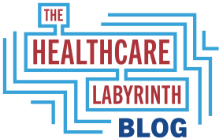While Medicare Advantage (MA) has seen huge increases in enrollment since the beginning of the decade, forecasts suggest that enrollment growth will be reduced moving forward. Many things factor into the slowdown, including a new rate environment, poor Star performance, and reaching saturation in certain areas of the country. Nonetheless, MA continues to be a strong program and the most-lucrative place to be if you are an insurer.
One segment of the MA program, Special Needs Plans (SNPs), however, are destined to continue to grow significantly moving forward. This is driven in part by policies from the Centers for Medicare and Medicaid Services (CMS) and the significant financial opportunity plans see.
As of November 2023, SNP and related program enrollment stood at over 6.6 million. That is a 15% growth since January 2023. There are three types of SNPs: (1) Institutional SNPs or I-SNPs (the individual is a resident of a long-term care facility or at risk of institutionalization; (2) chronic condition SNPs or C-SNPs (the individual must have one or more specific disease states to enroll in a plan tailored to them); and (3) Dual Eligible SNPs or D-SNPs (where enrollees are eligible for both Medicare and Medicaid (in some form). It is often the case that those who enroll in I-SNPs or C-SNPs also are dual eligibles.
A little on SNP history
It was not long ago that SNPs faced extinction. CMS felt MA health plans viewed SNPs as marketing tools rather than specialized plans to improve outcomes and save costs. Only last-minute extensions of the program allowed SNPs to continue to be offered. CMS began to come around and the program eventually was made permanent. At the same time, CMS laid out much more rigorous requirements and oversight. This has led to the burgeoning of the SNP rolls. Dual eligible SNPs dominate the SNP landscape and are about 90 percent of all SNP enrollment (including the Medicare-Medicaid Plan (MMP) pilot that is being phased out).
Regulatory trends
The SNP market is changing dramatically due to the enrollment surge as well as new regulations adopted by CMS. Here are some of the important changes that have been made or will be made.
- CMS has honed its audit protocol. It is still evolving but regulatory oversight has increased dramatically. Plans face close scrutiny in many areas, including health risk assessment completion, individualized care plan creation and issuance, the formation of an interdisciplinary care team for each member to drive health outcomes, and aggressive risk and health status change tracking and intervention. CMS is auditing against both the regulations in place as well as the filed Model of Care each plan must create and get approved by the National Committee for Quality Assurance (NCQA).
- CMS has passed a number of rules that seek to closely integrate Medicare and Medicaid funding streams and clinical oversight. This is applicable to D-SNPs. Most D-SNP plans meet what is known as the coordination requirement, where the D-SNP simply coordinates some activities (e.g., inpatient admissions) with a state Medicaid fee-for-service (FFS) program or Medicaid managed care plan. CMS would like all D-SNPs to become far more integrated, including ultimately to have all D-SNPs be fully integrated (FIDE) or highly integrated (HIDE) plans. Such plans have numerous additional regulatory requirements across enrollment, care management, authorizations, appeals, and grievances. Such plans will see strong and robust state Medicaid requirements built in as well.
- CMS is also promoting the breakout of SNP contracts from plan master contracts so that SNP quality can be better evaluated. This could also lead to different Star quality measures over time for SNPs. Right now there are just a few additive SNP measures. Otherwise, the SNP population is evaluated within the overall membership in a given plan contract.
- CMS also is encouraging a heavy focus on social determinants of health. This is most important with SNP populations. CMS looks to SNPs to screen for such social barriers and mitigate them to promote better health outcomes. Some studies suggest that social barriers can be a greater determinant of health outcomes than underlying disease states.
- Significant proposed changes impacting SNPs for 2025 include:
- Changing the current dual eligible special enrollment period to allow enrollment only in integrated SNPs if outside the regular enrollment periods.
- Limiting enrollment in certain D-SNPs to those individuals who are also enrolled in an affiliated Medicaid managed care organization (MCO).
- Limiting the number of D-SNP plan benefit packages an MA organization can offer in the same service area as an affiliated Medicaid MCO. This last stipulation also would apply to a parent organization or entity that shares a parent organization with the MA organization.
- Reducing the number of D-SNP look-alike plans.
- While applicable to all plans, SNPs would also need to perform outreach efforts on promoting the availability of supplemental benefits, create an individually customized mid-year analysis of supplemental benefits (benefits that were used and not used), and furnish to CMS evidence-based clinical criteria when proposing chronically ill supplemental benefits to ensure the benefit has a reasonable expectation of improving the health or overall function of chronically ill enrollees.
Why are MA plans investing here?
MA plans are focusing on building and growing MA plans for a few reasons.
- Many of the plans are also in Medicaid and see natural synergies (including the spread of administrative costs) between the Medicaid and Medicare lines of business.
- With the move to integrate the Medicare and Medicaid funding streams, health plans do not want to risk being left out of membership in either line of business. This includes the major focus in states on long-term managed healthcare.
- SNP membership offers much greater per-member revenue due to various factors in the demographic portion of the rate-setting system (e.g., Medicaid status, frailty, etc.) as well as the clinical HCC risk adjustment component (dual eligibles and SNP members tend to have multiple disease states).
- Done right, health plans can also reduce costs dramatically against the FFS cost as long as they practice good clinical oversight and address social determinant barriers. Dual eligibles represent 17% of Medicare beneficiaries and 14% of Medicaid enrollees but consume 33% of traditional Medicare spending and 32% of Medicaid spending. This is what CMS wants plans to tackle.
So, SNPs offer MA plans the ability to improve health outcomes while also registering a healthy margin. But more and more, SNPs are not for the faint of heart. Running a SNP product requires superb regulatory and clinical execution as well as acute sensitivity to the ever-changing integration between Medicaid and Medicare.
#snp #snps #dsnp #dualeligibles #medicareadvantage #medicaid #ltss #longtermcare #supplementalbenefits #sdoh
— Marc S. Ryan





